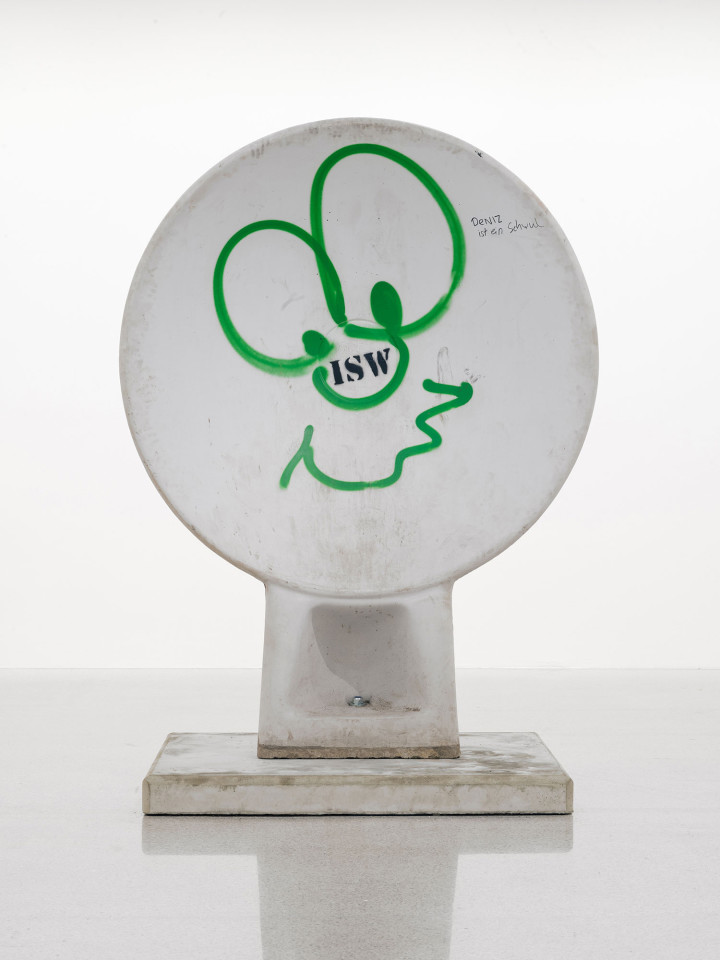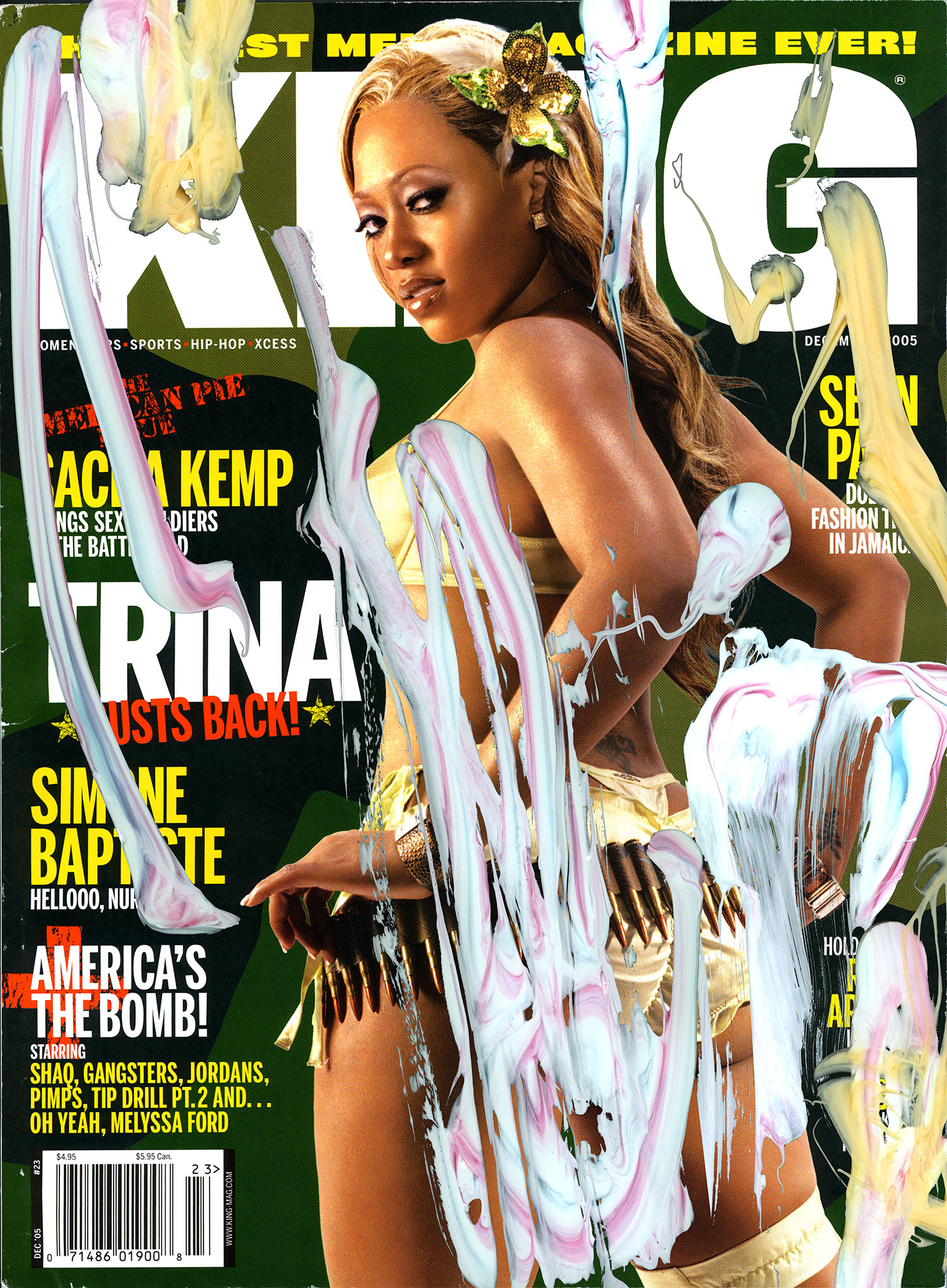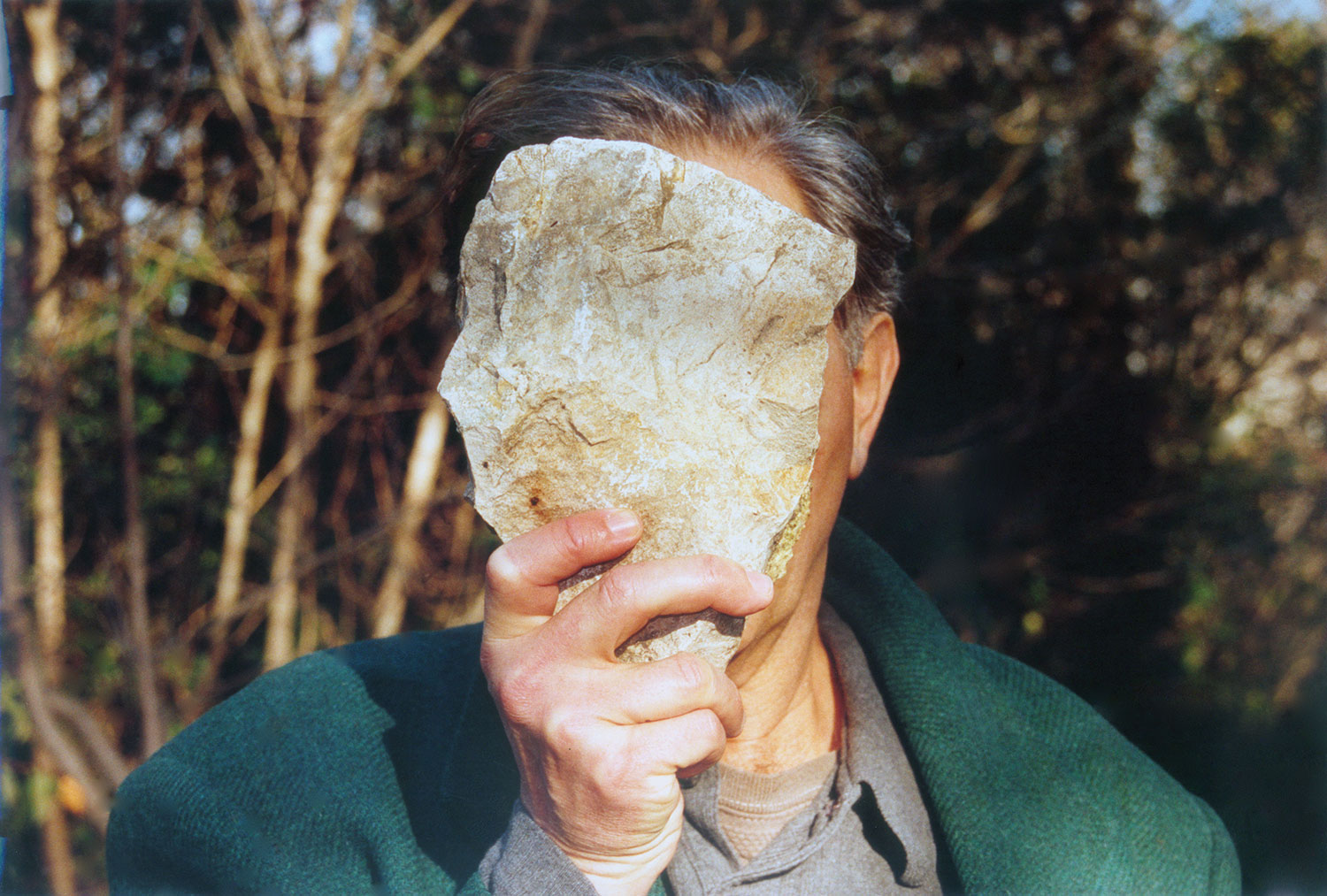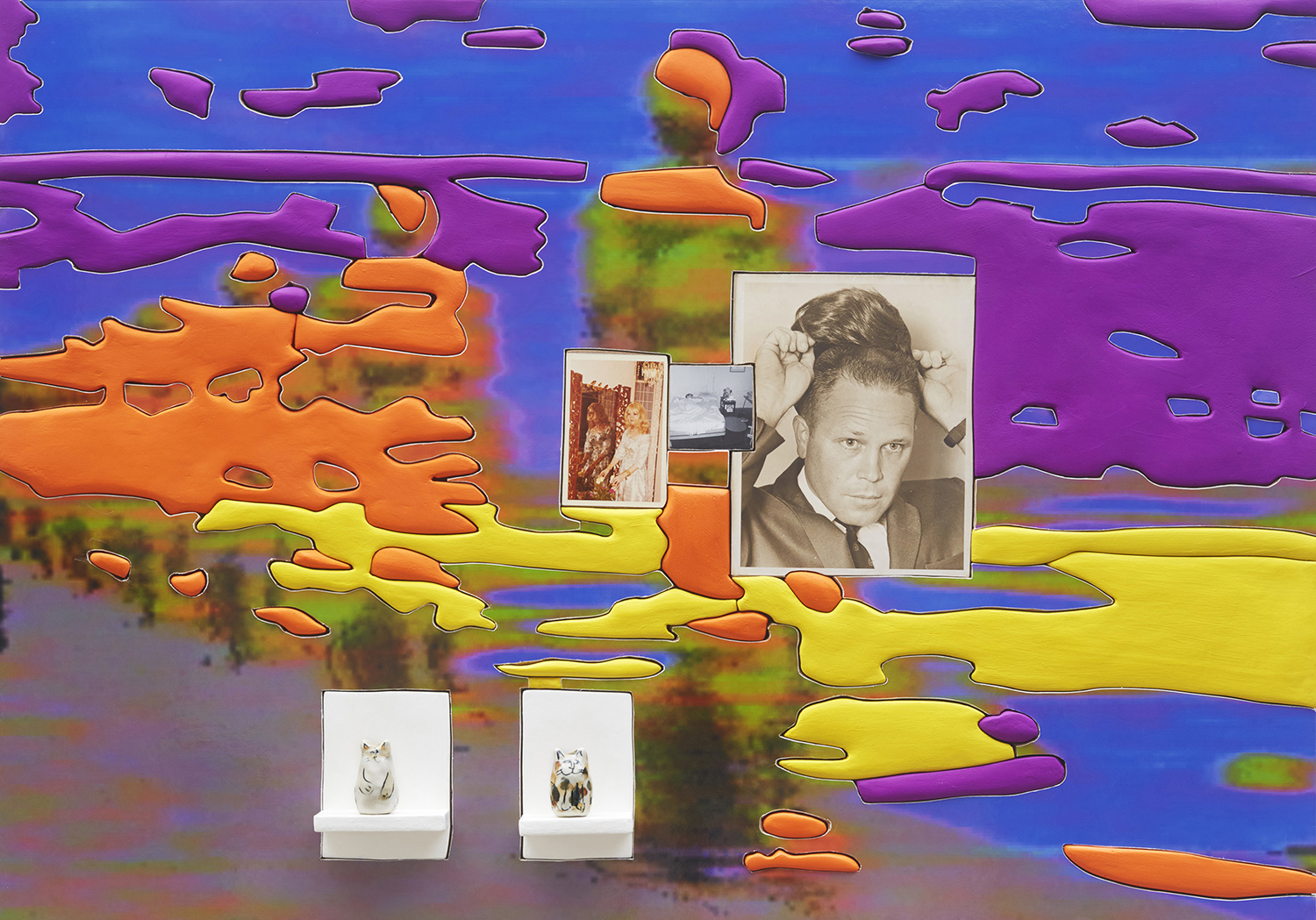
The recent work of Anna-Sophie Berger (b. 1989, Austria; lives in New York) has included phenomenologically expansive installations that take into account such day-to-day human processes as dressing, wearing clothing, eating, drinking, socializing and talking. Each of these everyday processes is arranged, articulated or recalled with a precise sense of direction. The sculpture when I am with you / when I am not there (2014) features two coats made from different fabrics — satin silk and cotton — tied together by the sleeves, suggesting two different bodies in different times, spaces and seasons. Whether they miss the same absent body, or the body misses them, there is a form of animation at play in Berger’s work that relates to the spirits of human beings and their energies focused in and among objects. In the conversation that follows, Berger talks about her recent work and the care and attentiveness at the heart of a social life.
Laura McLean-Ferris: Central to your recent exhibition “Places to Fight and to Make Up” at mumok in Vienna were a pair of concrete parabolic reflectors (acoustic mirrors) taken from a playground from the third communal district of Vienna. These are also called “whisper mirrors” because they concentrate sound waves so that one can whisper into them and be heard very clearly by a person standing very far away at the opposite concrete mirror. It’s a form of intimacy that suggests a secretive way of public communication. In the context of the playground they are meant as a pedagogical toy or game for children, so that they can learn about sound, yet on these particular parabolic reflectors there are also graffiti tags and images. These both animate the objects and communicate the language of other users of the playground. Could you tell me how you became acquainted with the parabolic reflectors in their former location, and how you began thinking about some of these questions?
Anna-Sophie Berger: I first established a very personal relationship to the dishes, as I lived around the corner from the park they were positioned at. I spend a lot of time paying attention to the environments I live in: I walk a lot and take pictures. The reflectors struck me as metaphors for a heightened or singled-out mode of perception. Because when one uses them, the bodily distance between the speakers and the acoustic effect gives a notion of extreme proximity, a collision that forms a fantastic fiction. The sound of one’s voice appears foreign and intimate at once. The title of the show was thus first pronounced in a poetic relation to these strange large objects — the idea of using them when a fight is coming to a close. The moment when one is not yet willing to look the other one in the eye again, yet anger is fading and one is prepared to smile. As in many of my works, this personal narrative is then conflated or married with wider thoughts about the themes it touches on. Who are the ones the objects are intended for and for what reason? What would be a good, successful use of them? Would it be a failure if we found them to be misunderstood by most and mistreated through a nonconventional use — visual communication as in the graffiti and tagging? Would they be missed if they were removed? My conceptual intervention can be understood as an investigation of these questions, creating complication and disruption within the parabolas’ history.
LMF: The various possibilities or conditions for communication are raised by them in several other ways. Including the way that for the duration of the exhibition they function as sculptures in a gallery and provoke a different kind of conversation around them. They seem to ask what forms of communication are possible in several different contexts.
ASB: It is interesting how they appear more fragile and more monumental at once, as soon as they are placed into a sterile white cube. Certain aspects of the clandestine vernacular displayed on them cannot be sufficiently decoded within the museum walls. In a park setting, what appears derogative or vulgar could be the sign of a bond, a dare, or an expression of endearment between invisible protagonists. I am interested in all of these aspects, eventually becoming myself both disrupter — as artist agent who steals them away for the time being — and victim of that act as former resident.

LMF: They also evoke the political ideas around public space in relation to communication. Because of the way public space has been somewhat decimated, due to the flight of dialogue to private online networks, a physical public place or a form of communicative channel for fighting and making up seems important to emphasize. There’s a sense here of the simultaneous strength and fragility of relationships that crash and strengthen through dialogue.
ASB: Yes, this is an important topic. I am not necessarily proposing that dialogue must be in physical space as opposed to digital, but I am placing value on the potential of communication as a social act. Vienna is for the most part a wealthy city: in most of the inner districts middle-class living prevails and space is not as scarce as it is in a place like New York. Even though Vienna has a long tradition of social housing and social building projects that were premised on the idea of at least some aspects of life being shared at all times, these projects have often failed in practice. It’s interesting to think about places like parks as spaces only certain individuals within a society will want and need to make use of. These seem to be an example of the domineering effect of democracies that are increasingly based on private individualization: to shift value from places of social congregation to the private home. At the same time, there has been rightful criticism of public space that is designed to educate an abstract public to improve itself by becoming better or more harmonious. After all, it seems absurd to attempt to regulate and rigidly shape life within a city. Ultimately, to me, the parabolas — whilst superficially stained — are as active and vivid a sign of a public reflecting itself through communication as one could hope for.
LMF: There’s a circuitous relationship to objects in your work, in the way that you temporarily remove objects from circulation and temporarily alter their status. This is apparent in this exhibition with the parabolas, but also with the standard-issue benches common to public gatherings in Austria, that are violently cracked in half in the mumok show. There is also Pea Earring (2015), a pea in a silver claw clasp, and the appearance of works created by the wet imprint of certain robes that have undergone several transformations in your recent exhibitions.
ASB: Yes, it’s true that this logic becomes especially visible in “Places to Fight and to Make Up.” I am drawn to areas of life or objects that act as symbols of sorts, though they might be the most banal elements of object culture. The pea as an overused symbol for nourishment, the prototypical bench for events, but also the basic shape of a coat or a loaf of bread. I am above all interested in the attached values these signs have accumulated; I like to call it the dirtiness of the sign. I am less interested in proposing new shapes or novelty — which is why abstraction to me doesn’t come that easily. In drawing from the cosmology of everyday living and intervening in the common logic I hope to reflect on the attention and desire that drive us. In a way it is therefore the mirroring of a performed interaction at all times — which could be read as violence, love, attention or care.

LMF: In Bernard Stiegler’s conceptions of care and attention, he writes that the development of advertising and marketing has allowed industry to be concentrated on harnessing attention and channeling the libido. He is concerned that this destroys certain knowledge circuits that allow the circulation of shared affects and solidarities. This is how we understand each other and the social in general, and involves a kind of ethics. What I think is so interesting about your application of the kind of desire-forming strategies that he discusses, is that you might be turning these tools in on themselves or toward a kind of ethics.
ASB: I relate very strongly to that criticism, and I agree that within this lies the full crux of our being cut off from a) our own feelings, as in what we desire in a true emotional sense; and b) the objects and often also people that this desire is directed at. Choosing and owning an object, be it to heal, to feel well, to decorate or to adorn ourselves, is necessarily romantic. Marketing disrupts that romantic relationship and leads to our longing for an idea to compensate or fix things via consumption. This resembles a narcissistic relationship, in which our own feelings are buried. Our reaction often is to condemn objects as vile or corruptive. Maybe though, this still goes further back to a Christian heritage that opposes all material things to the spiritual true self — the soul. I think we cannot underestimate how deeply entangled Western societies are in such assumptions. Also, fully appreciating the material world means accepting ourselves as body and a body as finite. This seems trivial, but psychologically speaking is one of the harshest truths about human existence. I love this quote from Tarkovsky’s The Mirror (1975): “A soul without a body is like a body without a shirt.”
LMF: Care seems to be an important facet of your work. You’ve described your sociological approach to objects — could you say something about the particular ways that you conceive of the issue of care in relation to the works? Again, I’m thinking of the relationship between care and attention in your work — the way the pea of Pea Earring, protected by a silver clasp, is included in Pea Campaign, photographed as worn by models as a form of publicity for the specialness of the pea.
ASB: Care is an important topic. It was a revelation to have both of the two essays for the publication that accompanies the exhibition [Marianne Dobner, “Anna-Sophie Berger’s Ethics of Objects,” and Tess Edmonson, “Food, Garments, Bodies, Place, Style, Meaning,” in Anna-Sophie Berger: Manual, edited by Marianne Dobner, Cologne: Verlag der Buchhandlung Walther König, 2016] refer to my work as a sort of personal ethics around the object. I should say, however, that when I work with and through objects I always understand them as intrinsically linked to human behavior and use, and I am not interested in severing that bond. So these objects to me are like extended agents of human intention, desire, love, hate. Although I would not intend to propose moralizing rules suggesting how one should behave, all my investigations place an emphasis on a careful study of things. I like to raise questions of conservation and safekeeping, as for example with the watermarks left by the impact of a wet coat on paper, which are called Choicest Relics (2016). To me, as you mention, care is not confined to the realm of objects but is naturally also expanded to care of oneself — notions of the fragility of life and finitude as an ultimate bracket to existence. I always felt strongly that to have a proactive approach to material culture and to be critical of consumption, one would have to first accept the relevance of objects as integral parts of human life. Having moved to New York ever so recently within a time of political turmoil I find myself constantly faced with aspects of social and material life that I cannot quite understand. Some of the values that I naturally place on bodily health — and also conservation, repair and protection — seem completely lost or nonexistent.
LMF: On the subject of self-care, can you describe your mandala coloring exercise works? Though these are sometimes melancholic or despairing, they can also be very funny in their cataloguing of the waves of mood and the banality of being an alive person: there are moments where you describe being too lazy or depressed to pee or feeling energetic or philosophical and eating fruit.
ASB: I set out to color one mandala each day for fourteen days. I was thinking a lot about productivity as an artist back then, specifically since I go back and forth between the extremes of a European-funding-based environment that still attaches lots of value to the artist figure as a lazy, undisciplined flâneur and the American system that urges artists to state at all times their work ethic and time spent at the studio. Of course this is oversimplifying. But I was interested in whether, contrary to the idea that the artist feels an urge to produce something larger than themselves, art could be also looked at as a delicate passe-temps, the artwork serving as a way to not get bored, in a sense, as if the artist were exploiting the artwork. So I gave myself the task of coloring, and wrote down more or less self-revelatory notes that circle around the banality of daily life, tropes of meaningful investment of time, depression and motivation. I was drawing inspiration from behavior and work therapy, fields in which these culturally appropriated symbols often find application.

LMF: There was a direct conflation of the care/cure relationship in your exhibition at Ludlow 38, “Growing Horns” (2015), which featured photographs of two cashmere goats that your parents keep as pets, as well as your creation of a pharmaceutical ointment from a specific recipe. As in Pea Campaign, there is the sense that feeding, petting and caring are involved in a processes of material transformation that includes forms that we might describe as magical or healing. I wonder whether the exhibition seems to ask, What do we believe are “works” and what kind of attention creates transformative forms of belief?
ASB: I was definitely interested in belief in terms of the establishment of value and identity. Reality as experienced by an individual would be somewhat arbitrary if we did not define preferences among the individuals and objects we surround ourselves with. Care to me is an act of choice, of decision-making. I first got interested in the ointment as an item strongly linked to my childhood — a cream that my mother would give us and thereby declare it “the only true” remedy. This belief, which is more than esoteric and connects strongly to notions of belonging and identity, shapes our relationship to care and ultimately also cure. I then worked with the cream as metaphorical and literal subject matter — it served somewhat like a glue running through the works, connecting them while being actually smeared on several wall works and displayed in a large bowl. I like Badiou’s concept of “curbing chance” as a description of love. A willful act.
LMF: I like this investment in both material transformation and the attempt to change a person’s condition, mood, state of being somehow. I think it also connects to the relationship to reproductive labor in the form of food preparation and caregiving.
ASB: I am as much an optimist as I am a realist, so often I find myself thinking I can change almost all my behavior on the grounds of cognition. Like if I chose to feel well, I could. Of course this is not how the world functions, and in such a purely materialistic view, love and emotional — yes, even magical — aspects of one’s existence would be cut off. It is also not the truth, since we can painfully suffer from leaving our home, from missing a dish we connect to a dear friend, from losing a sock, from growing apart. The exhibition was exploring the subject matter of recipes as sort of agents for change. This week, at a moment that felt somehow low in spirit to me and my flatmates — maybe because of the times or maybe because of the cold — I decided to bake these Austrian Christmas cookies called Vanillekipferl. I told my flatmate — and this might almost sound banal — how amazing it was, that through the recipe I was able to re-create something that belonged so strongly to a different time-place continuum. It is comforting somehow, but it also indicates a change already in progress. When we met recently, you and I talked about this aspect of the current political situation in the US, which can easily leave us paralyzed. As I was leaving Vienna when Trump was elected president, the only productive action I recall was talking to my students for the class I teach at the University of Applied Arts. We definitely had no solutions, but we had our communality and interactions. Similar to the cookie baking, the congregating in a space among friends, providing a room for conversation and being there for one another, seems a first step to defy futility.





